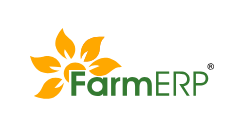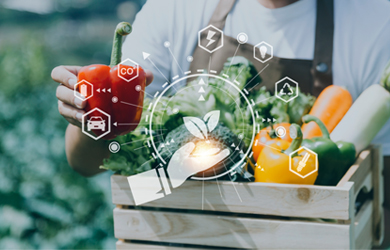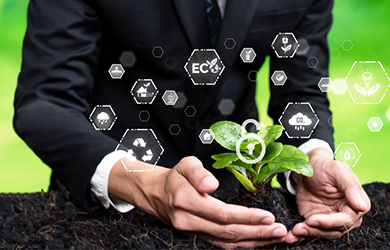What Makes Hydroponics a Viable Agriculture Strategy in the Middle East?
Food and agribusiness today is a massive industry in the Middle East that is constantly advancing and progressing. Sensing opportunities in the region’s agricultural potential, producers and agribusinesses are racing to capture value from technological innovation, especially hydroponics and vertical farming. With the sprawl of megacities diverting freshwater from traditional agriculture and water resources depleting rapidly, hydroponics in the Middle East has become extremely essential.
Crop cultivation in the Middle East has to face numerous hurdles. Limited water resources and unavailability of arable land make it difficult for producers to grow healthy and high-quality crops. Vertical farming or hydroponics in the Middle East region can be the solution to this problem. It eliminates the dependence on soil, requires much less water and reduces the pest and disease threats considerably.
With hydroponic farming in the Middle East region, the critical issues of water scarcity, food insecurity, pest infestations, etc could be reduced dramatically. Adopting the soilless technique of agriculture can also be beneficial in growing nutrient-rich crops all year round without compromising on the quality of yields. Read on to understand what makes hydroponics an effective strategy to cultivate crops sustainably in the Middle East region.
A Diverse Set of Challenges Calls for Innovative Approaches
Food insecurity is one of the significant challenges in the Middle East, given the agricultural inefficiency due to the scarcity of water and arable land and gut-wrenching climatic conditions. According to a recent report by the UN Food and Agriculture Organisation, over 51 million people are suffering from hunger in Arab nations. Moreover, the Middle East (including North Africa) accounted for 20% of the world’s acutely food insecure people in 2020.
In such a situation, meeting increased demand with the traditional farming practices will possibly lead to intense competition for natural resources. With the ongoing climate change dynamics, the region is predicted to become hotter and drier in the future. Furthermore, the Middle East is the most water-stressed region in the world and suffers from severe land constraints that significantly restrict its food production. The World Resources Institute predicted that the UAE, Bahrain, Kuwait, Qatar, and Palestine will rank first as the world’s most water-stressed countries by 2040. This is expected to play a key role in promoting food insecurity and increasing the region’s reliance on imports.
To address these challenges, the region has been heavily investing in various companies and startups that leverage innovative technologies such as artificial intelligence (AI), the internet of things (IoT), and data analytics. Hydroponics and vertical farming have particularly been emerging as promising solutions to the problem of food scarcity in the region.
High Suitability of Hydroponics to Middle East’s Environment
Indoor farming has been around for decades, owing to the emergence of greenhouses through the agricultural revolution. With significant advancements of agritech in the Middle East, farmers have been growing crops not only in the dead of winter but also in the heart of the desert.
Vertical farming is favourable for the Middle East’s agriculture, as the water-efficient factor enables it to work in arid climates. Compared to farming on the agricultural field, hydroponics uses significantly less water and enables higher yields and more frequent harvests.
The climate, in addition to scarce land and water, in arid countries is widely unsuitable for crop cultivation. As a result, vertical farming and hydroponics in the Middle East are key to creating a more resilient and reliable food supply chain in the region.
Significant Contribution of Hydroponics to Sustainable Agriculture
Hydroponic plant cultivation is typically done indoors, in a controlled environment, thereby enabling cultivation in urban areas and megacity centers. By the next decade, a major portion of the population is expected to be living in cities while the agriculture productivity rates will struggle to move upward.
Hydroponics in the Middle East will not only help address these agriculture productivity issues but also reduce the food miles and ensure a faster supply of fresh produce to consumers. Growing herbs, leafy greens, fruits, and vegetables in a controlled environment protects the crops from pests and diseases, thus reducing the usage of pesticides.
What Does the Best Solution and Progress Look Like So Far?
Understanding the advantages of hydroponics in the Middle East, governments and potential leaders are capitalising on these methods to build a truly resilient, food-secure sector. Agritech companies are also leveraging IoT-based agriculture systems to design vertical farm modules that consume fewer resources but yield high-quality crops. Furthermore, they are providing training and management services to hydroponic growers in the Middle East to end the food insecurity woes of the region.
With the building of indoor farms required for hydroponics and vertical farming in the Middle East, the focus is now inclined towards helping food producers maintain efficiency from farm to fork, even during the time of crisis such as the COVID-19. As smartphones and other digital tools become increasingly available to smallholder farmers, the uptake of hydroponics in the Middle East will not be limited to large agricultural companies.
Advancements in technological innovations and powerful digital solutions are enhancing the economic prospects of hydroponics in the Middle East. FarmERP can provide top-notch agritech solutions to assist hydroponic producers throughout the crop planning and management process. Get in touch with us to know more about our offerings related to vertical farming and hydroponic farming.





